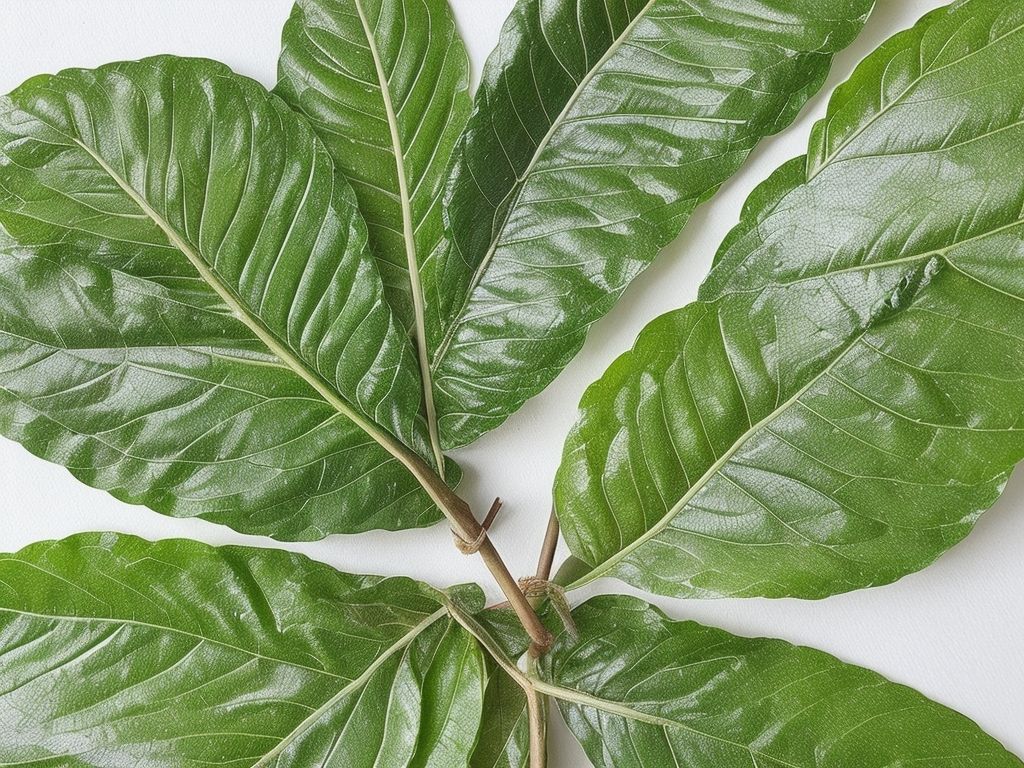Recognizing Kratom Overdose Symptoms: Signs & Treatment
Kratom has become popular lately, but it’s important to know the risks. This article looks at the symptoms of an overdose, and suggests what to do if it happens.
Kratom is a tree from Southeast Asia. For centuries, it has been used as medicine. It contains ingredients that have stimulant and opioid-like effects. An overdose can be dangerous.
The main symptom of a kratom overdose is respiratory depression. This is when the central nervous system is too slow, and breathing is hard. Other symptoms are drowsiness, confusion, nausea, and seizures. If it isn’t treated, it can be deadly.
If you think you or someone else has overdosed, get help. First, stabilize breathing and ensure the airways are clear. This may involve giving oxygen or using a ventilator.
Medication like naloxone can be given to reverse the effects. It works quickly to restore respiration and counteract the sedative effects of kratom. However, it’s only temporary, and more medical help may be needed.
To prevent future overdoses, learn about proper dosage and potential interactions. Talk to a healthcare professional or specialist for advice on safe kratom use.
It’s also good to get support from support groups or therapy, to tackle any underlying issues that may lead to kratom use. This can help reduce the risk of overdose and relapse.
Definition of Kratom and its Usage
Kratom, a tree native to Southeast Asia, is becoming popular as an alternative medicinal herb. Its uses range from relieving pain to managing opioid withdrawal. For centuries, it has been utilized by local communities for its healing properties.
Derived from the Mitragyna speciosa tree, Kratom has stimulating and sedative effects, depending on the dosage. It has alkaloids that affect the brain’s receptors, causing various physical reactions. Those in favour of Kratom say it can relieve chronic pain, increase energy and sharpen focus.
Kratom is accepted in many countries, including the US, but it is not regulated. This has caused anxiety regarding its safety and potential side effects. Overuse of Kratom can lead to nausea, vomiting, dizziness, constipation and breathing issues.
In the past, indigenous people have been using Kratom for its helpful qualities. In traditional Southeast Asian medicine, it was used to ease pain and reduce tiredness. People chewed or drank it as tea to take advantage of its therapeutic benefits.
To sum up, Kratom is a tropical plant with a long history of traditional use among indigenous people in Southeast Asia. Its increasing popularity has generated interest and worry in medical circles due to its unregulated status and possible side effects when consumed in high doses.
What is a Kratom Overdose?
Kratom Overdose occurs when too much of the herbal supplement is consumed. Kratom is from Southeast Asia and not governed by the FDA, making it hard to know a safe dosage. Possible symptoms are nausea, vomiting, dizziness, confusion, seizures, coma, and resp. depression. These depend on the amount taken and individual tolerance.
Kratom has alkaloids that interact with opioid receptors in the brain. Low doses give energy and euphoria. Higher doses offer sedation and pain relief. But too much Kratom can lead to dangerous side effects.
There have been fatalities linked to Kratom Overdose. In 2018, the CDC had 91 overdose deaths where Kratom was present or the cause of death. Be cautious with Kratom and seek medical help if needed.
How to Recognize a Kratom Overdose
Recognizing a kratom overdose is key to getting prompt medical support. Signs can be severe drowsiness, slow breathing, decreased heart rate, and slurred speech. It’s essential to be aware of these, to help someone having a possible kratom overdose.
Other indicators may be nausea, vomiting, constipation, muscle tremors, and seizures. These signs mustn’t be ignored, as they can indicate a life-threatening situation. Knowing these details can help in getting fast medical aid for the person.
It’s important to know the context and history of kratom overdoses. There have been reported cases of fatalities, but often with multiple substances or underlying health conditions. The potential harm from high doses of kratom should never be underestimated.
To stay safe, be aware of the signs of a kratom overdose. If you notice any worrying symptoms in yourself or someone who has taken kratom, act quickly. Professional medical help is essential for proper evaluation and treatment.
Immediate Actions to Take in Case of a Kratom Overdose
In case of a Kratom overdose, act fast and smart to protect the person affected. Knowing the right steps to take is key for their safety.
- Emergency services: Call for help right away or take them to a medical center. Quick medical attention is essential for handling the overdose.
- Provide info: Tell healthcare staff about the symptoms, dosage, and other substances taken with Kratom. This can help them give the right treatment.
- Don’t induce vomiting: It may be tempting, but do not induce vomiting without professional advice.
- Monitor: Carefully observe vital signs like breathing, heart rate, and consciousness level until help arrives or during transportation to a medical center.
Also, prevention is best. Be aware of safe usage and your limits to avoid an overdose.
Pro Tip: If you suspect a Kratom overdose, don’t wait – get medical help right away. Early action can make a big difference.
Seeking Medical Help
Suspect a kratom overdose? Professional help is a must! Timely and appropriate treatment can prevent complications. Reach out for medical attention as soon as possible.
Kratom overdoses may cause respiratory distress, seizures, cardiovascular problems, or even coma. Expert medical professionals can provide the necessary intervention to prevent any long-term damage.
In addition, psychological distress or emotional instability can be a result of excessive kratom consumption. Mental health complications such as anxiety, panic attacks, or severe depression may arise.
Always seek professional advice. The American Association of Poison Control Centers (AAPCC) reports an increase in calls related to kratom overdose. Get medical help right away to manage potential risks.
Prevention Tips for Avoiding Kratom Overdose
To avoid an overdose of kratom, follow these steps:
- Start with a small amount and slowly increase if needed.
- Know your tolerance level. Reduce or discontinue use if you need larger doses.
- Stay hydrated to prevent dehydration and its side effects.
- Don’t mix kratom with other substances, especially opioids or alcohol.
- Talk to a healthcare professional if unsure or have any concerns.
Consider individual responses to kratom, like metabolism, health, and existing medical conditions. Monitor your usage and know potential interactions.
Pro Tip: Start low and go slow. Listen to your body’s cues and make wise decisions.
Conclusion
In pursuit of info about kratom overdose symptoms, the conclusion we arrive at is critical. Knowing the signs & indicators of a potential kratom overdose is necessary for safety & well-being.
It’s evident that recognizing symptoms of a kratom overdose can be hard due to its varied nature. Some people may have GI distress or dizziness. Others could have more severe symptoms like respiratory depression & seizures. This stresses the need to be aware & seek medical help if there’re unusual symptoms.
It’s tough to decide if a specific instance is a genuine kratom overdose due to other factors. For example, combining kratom with other substances could lead to different symptoms. It’s essential to remember this when assessing an individual’s condition.
When it comes to health & well-being, it’s best to be cautious. Seek medical help right away if you or someone you know experiences any concerning symptoms after consuming kratom. Timely intervention can make a difference in preventing further complications or harm.
Everyone’s response to kratom may vary, making it important to stay informed about potential risks & warning signs. By staying educated & aware, we can ensure our safety & that of those around us. Let’s take proactive steps towards responsible consumption of substances. Let’s prioritize our well-being above all else.
Frequently Asked Questions
FAQs for Kratom Overdose Symptoms
1. Can you overdose on kratom?
Yes, it is possible to overdose on kratom. Although rare, taking extremely high doses of kratom can lead to overdosing.
2. What are the symptoms of a kratom overdose?
The symptoms of a kratom overdose may include nausea, vomiting, dizziness, tremors, rapid heartbeat, constipation, confusion, and even seizures in severe cases.
3. How much kratom is considered an overdose?
The exact dosage that could lead to an overdose varies from person to person. However, generally, taking more than 15 grams of kratom in a single dose can be considered a high-risk overdose.
4. What should I do if I suspect a kratom overdose?
If you suspect a kratom overdose, it is crucial to seek medical help immediately. Call emergency services or your local poison control center for guidance.
5. Are there any long-term effects of a kratom overdose?
While immediate effects of a kratom overdose can be severe, there isn’t enough research to determine the long-term effects. However, it is wise to avoid high doses to prevent potential complications.
6. Can I prevent a kratom overdose?
Yes, you can prevent a kratom overdose by starting with small doses and gradually increasing them as needed. Always follow the recommended dosage guidelines and never exceed the suggested limit.




Leave a Reply
Want to join the discussion?Feel free to contribute!